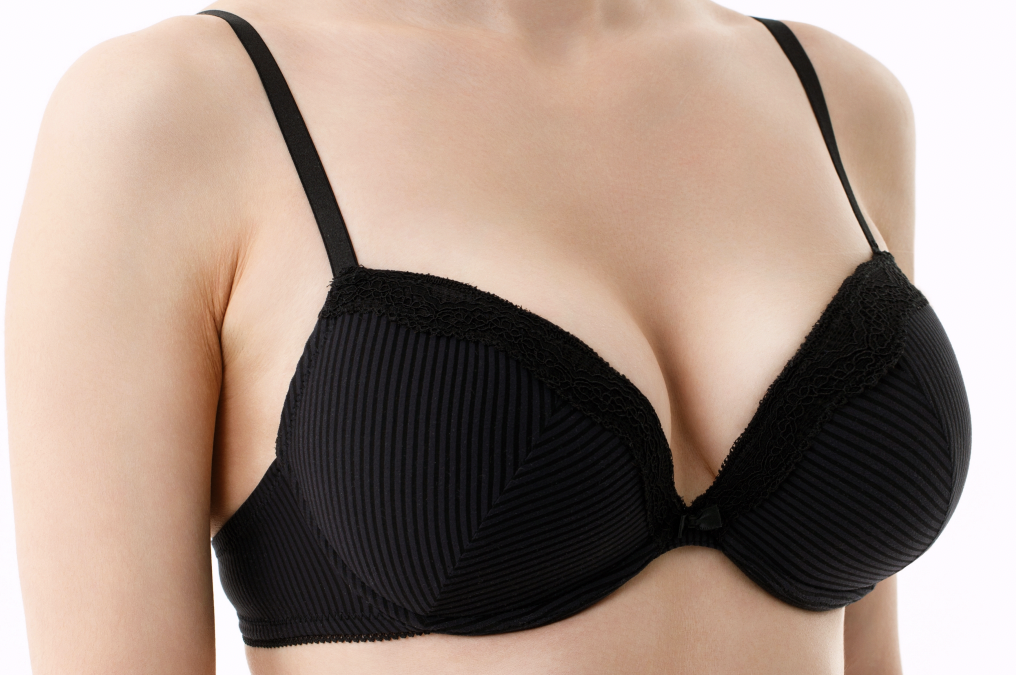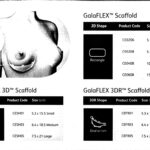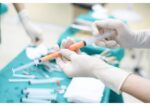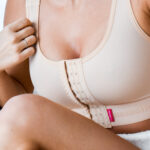Breast Enlargement, or ‘Breast Augmentation’ is a procedure to enlarge and enhance the breasts. It qualifies as one of the most common cosmetic surgical procedures in the UK and most other parts of the world.
Women, who decide to undergo this surgery, in the majority, feel that their breasts are not in proportion with their body, including too small with lack of fullness, especially in the breasts’ upper poles, i.e. lacking fullness in a low-cut cocktail dress. Cleavage definition may also be lacking and breast enlargement can contribute to its improvement. Women normally present in their early twenties or after having had children.
Breast size, fullness and cleavage are influenced by a number of factors, which include pregnancy, breast-feeding, and weight change in addition to congenital (from birth), when in some women the breasts do not grow in proportion relative to the female body.
Sometimes a breast may become more developed than the other; this equates to differences in size and/or shape of variable extent. In some cases, this warrants breast asymmetry correction too when performing enlargement.
The breasts may lose their shape and droop because of ageing. Breasts’ shape, size, and lack of fullness in addition to the loss of cleavage visibility can affect self-confidence. Therefore, breast enlargement/ augmentation in the appropriately selected patient can help in improving these parameters and physical appearance, which leads to psychological improvement.
Breast Enlargement can be achieved using fat transfer and/or breast implants. When combining both techniques the procedure is termed, a hybrid augmentation. Both can make the breasts fuller and larger with improved cleavage. In the case of fat transfer, it could lead, in the appropriately selected patient, to a more natural result.
In the case of fat transfer, this is performed in stages usually 1-3, 4-6 months apart, which allows time to determine how much fat is required at each time, if any. The donor sites for the fat harvest include the tummy, flanks and thighs. The donor sites would also benefit from being contoured in the process.
Breast implants come in many types, sizes, and shapes. Their outer shell is usually made of silicone and they are filled with either silicone gel or salt water (Saline). The outer surface can be textured (rough feeling); whilst in some implants the outer shell is smooth. Their expected shelf life is in the region of 10-12 years.
In my practice, I discuss with my patients what to expect following the surgery in addition to the most appropriate option/s and the latest information relevant to the surgery benefits, scars extent and location, potential risks and complications in addition to the recovery period.
We must not forget that “Breast Enlargement can be achieved using fat transfer and/or breast implants.” Fat transfer (Lipo-Filling) surgery may warrant 1-3 stages to achieve the desired cup size.
For me sizing breast implants is part of the consultation process as it helps the patient to see and feel the implants in addition to seeing how they may look in a mirror. The sizing of breast implants I have implemented in my clinic for the last 21 years and it has been an excellent tool in achieving good success and happy patients.
Breast augmentation surgery is usually carried out under general anaesthetic and will normally require a one-night stay in the hospital. There is scarring from the cuts performed during this procedure, but they are usually out of sight along the breast crease and kept to a minimum. I use drains overnight; however, in a very small number of patients, they may stay longer.
You will need to wear a sports bra without a wire to support your breasts for up to six weeks after your operation. A recovery period at home and from work is required, which is usually in the region of 2-3 weeks. I advise my patients to refrain from driving for a period of 2 weeks when undergoing augmentation with round implants and 3 weeks if they have teardrop implants.
The breasts are likely to be swollen for up to 3 months; their shape will continue to improve and become more natural as time goes on. As a result, I advise my patients not to shop for new swimwear and lingerie until following that period of time. The majority of patients require painkiller tablets for the first few days following surgery o control the pain. The satisfaction following this surgery tends to be very high.










